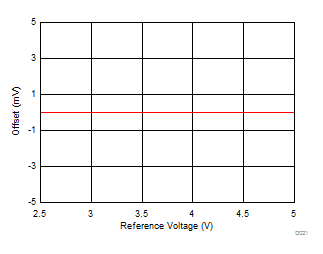ZHCSFE1B June 2016 – August 2017 ADS8920B , ADS8922B , ADS8924B
PRODUCTION DATA.
- 1 特性
- 2 应用
- 3 说明
- 4 Revision History
- 5 Pin Configuration and Functions
- 6 Specifications
-
7 Detailed Description
- 7.1 Overview
- 7.2 Functional Block Diagram
- 7.3 Feature Description
- 7.4 Device Functional Modes
- 7.5
Programming
- 7.5.1 Output Data Word
- 7.5.2 Data Transfer Frame
- 7.5.3 Interleaving Conversion Cycles and Data Transfer Frames
- 7.5.4 Data Transfer Protocols
- 7.5.5 Device Setup
- 7.6
Register Maps
- 7.6.1
Device Configuration and Register Maps
- 7.6.1.1 PD_CNTL Register (address = 04h) [reset = 00h]
- 7.6.1.2 SDI_CNTL Register (address = 008h) [reset = 00h]
- 7.6.1.3 SDO_CNTL Register (address = 0Ch) [reset = 00h]
- 7.6.1.4 DATA_CNTL Register (address = 010h) [reset = 00h]
- 7.6.1.5 PATN_LSB Register (address = 014h) [reset = 00h]
- 7.6.1.6 PATN_MID Register (address = 015h) [reset = 00h]
- 7.6.1.7 PATN_MSB Register (address = 016h) [reset = 00h]
- 7.6.1.8 OFST_CAL Register (address = 020h) [reset = 00h]
- 7.6.1.9 REF_MRG Register (address = 030h) [reset = 00h]
- 7.6.1
Device Configuration and Register Maps
-
8 Application and Implementation
- 8.1 Application Information
- 8.2 Typical Application
- 9 Power-Supply Recommendations
- 10Layout
- 11器件和文档支持
- 12机械、封装和可订购信息
6.8 Typical Characteristics
at TA = 25°C, RVDD = 5.5 V, DVDD = 3 V, VREF = 5 V, and maximum-rated throughput (unless otherwise noted)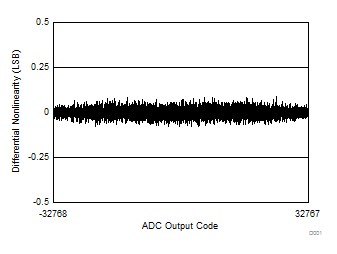
| Typical DNL = ±0.2 LSB |
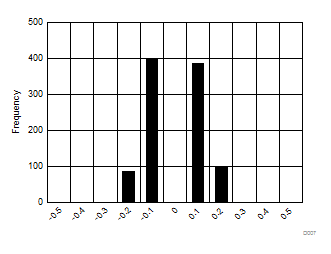
| 1000 devices |
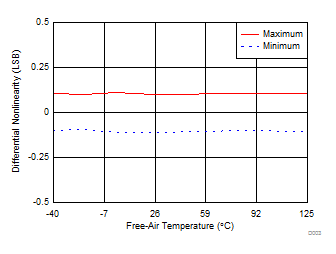
Figure 10. DNL vs Temperature
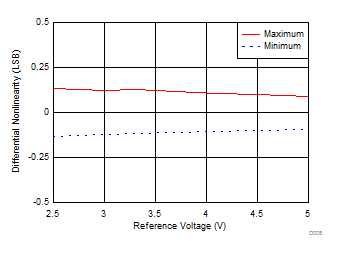
Figure 12. DNL vs Reference Voltage
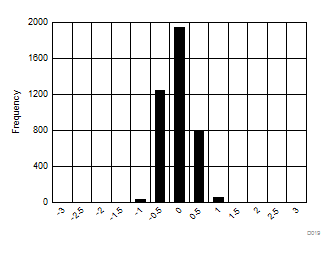
| 4000 devices |
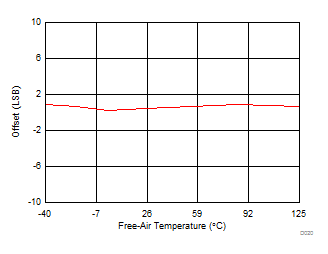
| REF_SEL[2:0] = 000b |
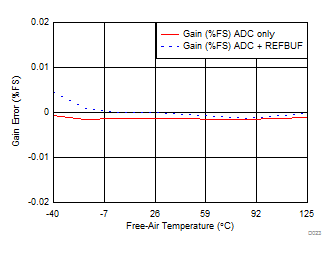
| EN_MARG = 0b |
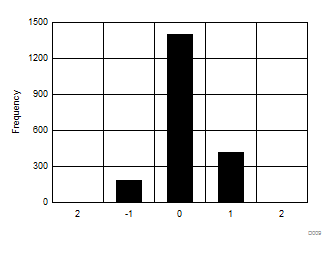
| Standard Deviation = 0.47 LSB |
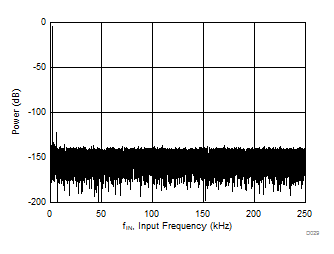
| fIN = 2 kHz | SNR = 96.8 dB | THD = –125 dB |
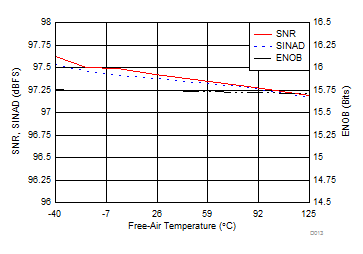
| fIN = 2 kHz |
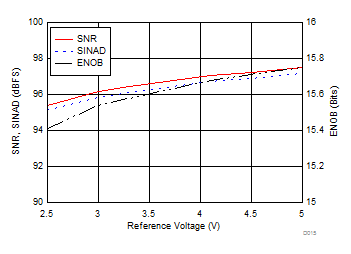
| fIN = 2 kHz |
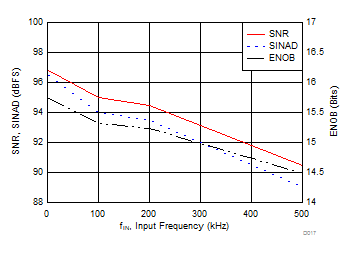
Figure 28. Noise Performance vs Input Frequency
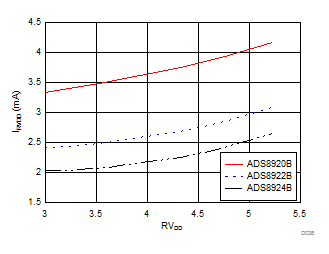
Figure 30. Analog Supply Current vs Supply Voltage
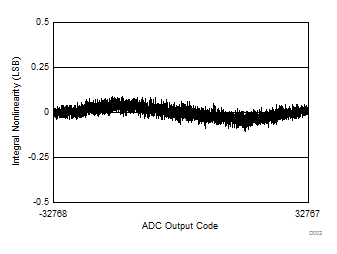
| Typical INL = ±0.3 LSB |
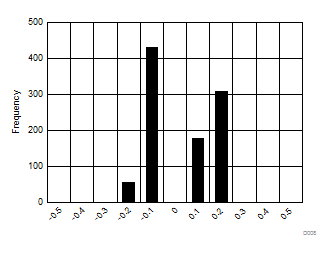
| 1000 devices |
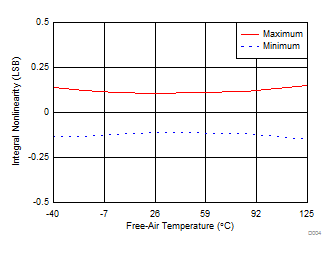
Figure 11. INL vs Temperature
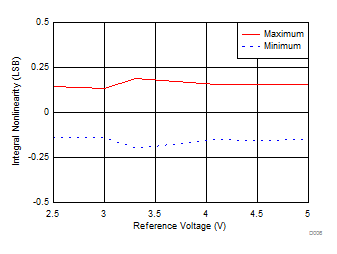
Figure 13. INL vs Reference Voltage
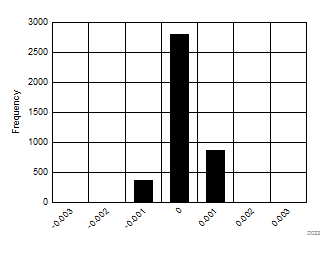
| 4000 devices |
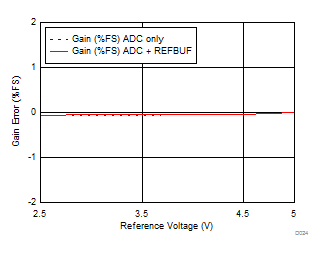
| EN_MARG = 0b |
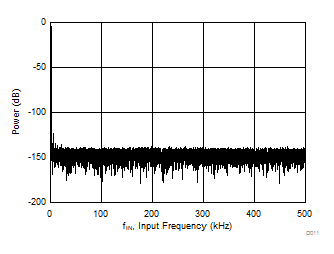
| fIN = 2 kHz | SNR = 96.8 dB | THD = –125 dB |
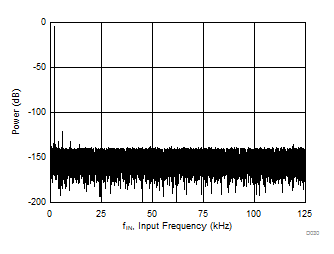
| fIN = 2 kHz | SNR = 96.8 dB | THD = –125 dB |
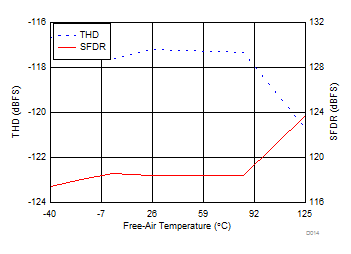
| fIN = 2 kHz |
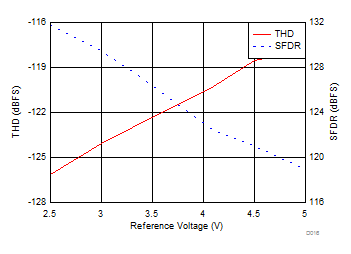
| fIN = 2 kHz |
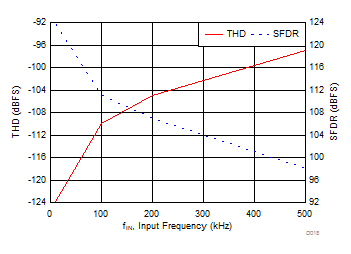
Figure 29. Distortion Performance vs Input Frequency
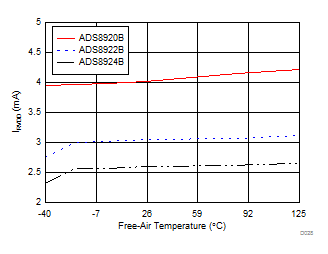
| RVDD = 5 V |
